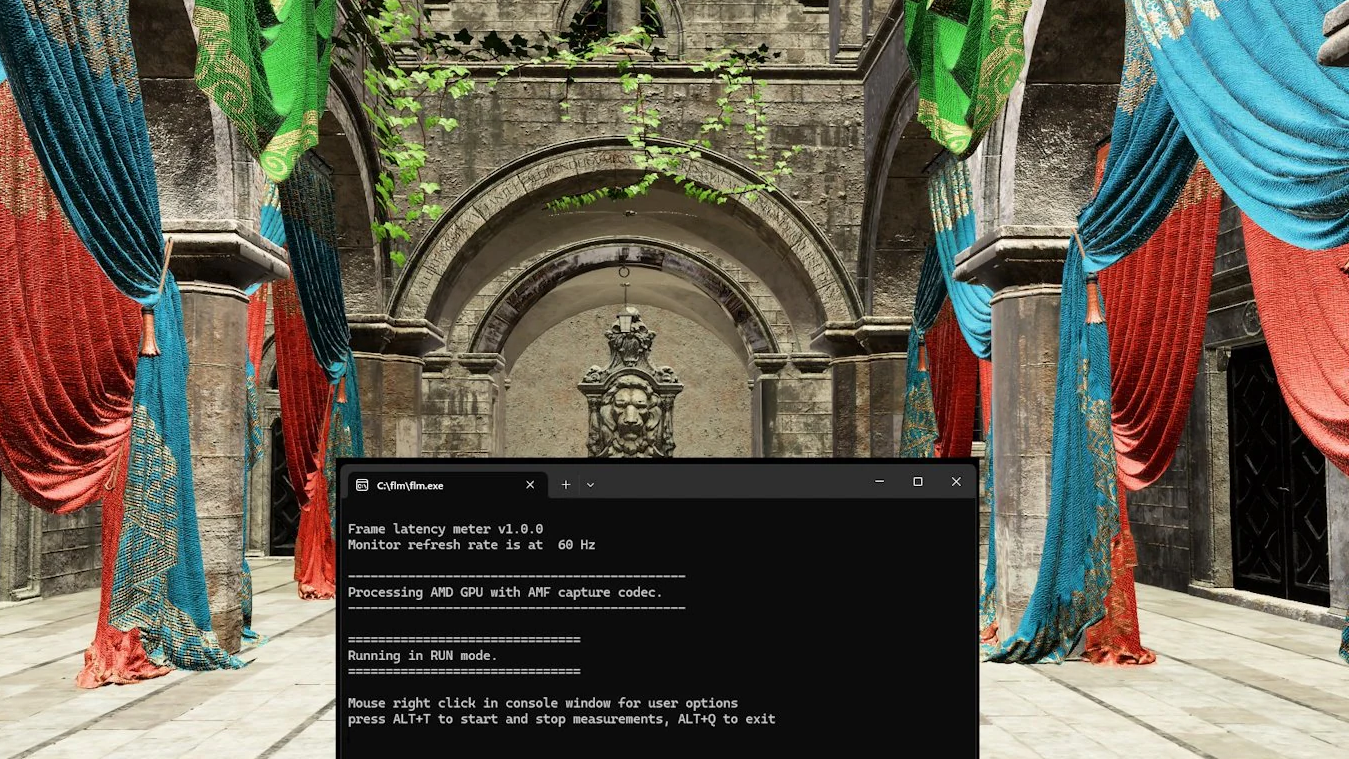
AMD just released its Frame Latency Meter (FLM) via GPUOpen. It's a software utility for Windows 10 and later that allows for users to measure mouse button to pixel latency without the need for any specialized sensors, high-speed cameras, or frame-counting based on muzzle flash. The utility apparently works on any AMD, Nvidia, or Intel GPU that supports DirectX 11 or newer and DXGI codec capturing, though AMD GPUs will instead use the hardware-native AMF capture codec.
✨ We are thrilled to release a brand-new tool today: Frame Latency Meter - FLM ✨This software-based latency meter tool make it an ideal solution for measuring the latency of the mouse response time in games 🐭⏱️🐭Find out more on GPUOpen: 👇https://t.co/0U2uoxvYqLJuly 22, 2024
FLM is fairly customizable, allowing users to set latency measurements based on either mouse movement or mouse clicks. Specific Frame Capture regions can be set, and latency measurements can be provided using small samples, continuous accumulation, or even a constant meter for all measurements. FLM can also account for the use of Frame Generation technology, though it's unclear if that works with all framegen games — both FSR 3 and DLSS 3 — or only with certain titles. These functions can all be controlled in-application or set to hotkeys, depending on the needs of the user.
If you're unfamiliar with frame latency measurements and why they matter, it's fairly common in certain corners of the Internet (including ours) to approximate the amount of input lag using button-to-pixel latency measurements. Previously, this was "easiest" to do with a high-speed camera, a regular old mouse, and any FPS game with functioning muzzle flash. The high-speed camera captured the instant of the mouse click, and then you count every frame until the muzzle flash (or other on-screen reaction to the click).
That gives a near-perfect measurement of mouse to display latency, at least for the game being tested. However, it comes with a very high cost for the initial setup, and the manual frame counting can be quite tedious.
Other tools exist that provide similar functionality, like Nvidia LDAT. That was something of a first attempt, and it's largely been supplanted by Nvidia's own software tools. FrameView as an example can be used in games that support Reflex to capture the latency measurements. (We use that in our GPU testing, though it's only supported in six of the games we currently test when using Nvidia GPUs, and only three of the games for AMD/Intel GPUs.)
With the introduction of AMD FLM, there's now an alternative to Nvidia's software utility. It's supposed to work with all modern games (DX11 or later), and like FrameView it doesn't need any specialized hardware. But it would be a separate tool to run, which potentially makes it less convenient — integration into AMD's OCAT utility would potentially be the better route to go in the future.
FLM should be useful for anyone looking at latency caused by displays, mice, keyboard, and drivers — as well as game engines. The people at AMD working on FSR / frame generation and anti-lag are likely already using a non-public version of the tool, but now AMD has made FLM freely available and open-source. Being able to quantify button-to-pixel latency can be useful for competitive gamers as well as reviewers, and having more than a single solution (i.e. Nvidia LDAT / FrameView / Reflex Latency Analyzer) should keep all the vendors honest.







